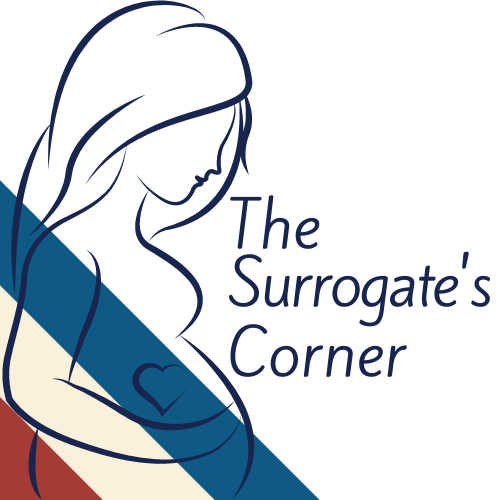
Thousands of incredible women who choose to become Egg Donors are opening up the doors to fertility options that many frustrated individuals and couples assumed were closed. The benefits and opportunities that egg donation provides to so many families today is remarkable. Regardless of whether you decide to engage in a fresh donation cycle, or a frozen one, the miraculous gift of life that you are bestowing on others is truly, truly amazing.
Egg Donors often engage in a deliberate internal debate over whether to donate anonymously to an agency/bank, or to do so directly to an identified recipient. This decision is discussed at length in our industry, and while the predominant path in the past was to use anonymous arrangements, momentum is building for pursuing identified arrangement (also called open donations or known arrangements) in the place of anonymous matches. I have a prior post on why I think Open Donations benefit everyone (you can read it here), but that is not the topic of discussion for today. In this post, I want to discuss disposition options in egg donation arrangements that are much less frequently talked about, but whose impact is felt for years after your donation is completed.
What are Disposition Options?
 When you donate your eggs, you will be asked how you want your eggs to be used in the future. The standard options are: thawed and discarded if the recipients don’t use them or want them any longer, donated to medical research, or donated to a third party to use for procreation (meaning to have a child). You can choose one option or a combination of the options. If you only want your eggs to be used by your identified recipient, then you can limit their use for the recipient’s reproductive purposes only. This means that if there are eggs leftover from your donation, or remaining embryos that were created using your eggs that they no longer need or intend to use, then the recipients only remaining choices are to store those eggs/embryos indefinitely or discard them. This puts many recipients in a difficult situation, because neither of those options sounds terribly appealing to a lot of people with leftover eggs/embryos.
When you donate your eggs, you will be asked how you want your eggs to be used in the future. The standard options are: thawed and discarded if the recipients don’t use them or want them any longer, donated to medical research, or donated to a third party to use for procreation (meaning to have a child). You can choose one option or a combination of the options. If you only want your eggs to be used by your identified recipient, then you can limit their use for the recipient’s reproductive purposes only. This means that if there are eggs leftover from your donation, or remaining embryos that were created using your eggs that they no longer need or intend to use, then the recipients only remaining choices are to store those eggs/embryos indefinitely or discard them. This puts many recipients in a difficult situation, because neither of those options sounds terribly appealing to a lot of people with leftover eggs/embryos.
Medical Research
Genetic material (sperm/eggs/embryos) that is unused and likely never to be used can be donated to medical research. Scientific discoveries and additional health benefits are being learned every year through the use of medical research on genetic material. By selecting this option on your disposition allowances, you will at least allow the recipient to contribute towards the body of knowledge that we have about human development, even if their material is never used to create a child of their own.
Third Party Reproduction
The third option, and the least likely to be selected by Egg Donors during their contract phase, is to allow the recipients of your eggs to donate them, or embryos they create using them, to someone else in the future. That downstream recipient, who you don’t currently know (and may never know) would be able to use your eggs to have a child. This might seem weird and uncomfortable to many of you, but it is really no different than considering doing an anonymous donation arrangement where someone you currently don’t know will use your eggs to (hopefully) have a child.
 Another hybrid option is to say that you will only allow your eggs to be donated in the future with your consent. This way the recipients would have to come back to you if they wanted to donate your eggs (or embryos they created with them) in the future and ask for your permission. Part of that consent process could entail you being notified of who the downstream recipient(s) will be and to have the opportunity to get to know them. I have found that many egg donors would be open to the prospect of their eggs being donated in the future, but they are uneasy about not knowing anything about a potential future recipient. This modified option could alleviate those concerns and still give the current recipients the opportunity to donate their leftover eggs or embryos in the future.
Another hybrid option is to say that you will only allow your eggs to be donated in the future with your consent. This way the recipients would have to come back to you if they wanted to donate your eggs (or embryos they created with them) in the future and ask for your permission. Part of that consent process could entail you being notified of who the downstream recipient(s) will be and to have the opportunity to get to know them. I have found that many egg donors would be open to the prospect of their eggs being donated in the future, but they are uneasy about not knowing anything about a potential future recipient. This modified option could alleviate those concerns and still give the current recipients the opportunity to donate their leftover eggs or embryos in the future.
How do You Know Which Options You Elected?
Your agency/bank should ask you as part of your intake forms and donor profile what kind of disposition options you are agreeable to. If that information is not clearly requested from you, then you can always let your case manager know that you want to make sure they know your future use preferences. Your donation contract should also include a section where it talks about future use, or future disposition, of your donated material. You will want to make sure you check with your attorney to verify your desires are accurately reflected in your contract. Even if you didn’t initially elect to allow for third parties to use your eggs, if you have a known arrangement, you could ask your recipients if they would be interested in modifying your contract in order to allow them to have that opportunity in the future.
I’m Donating Eggs; Why Should I Consider Implications for Embryo Donation?
So, here is why I think it is so important to carefully consider and weigh your disposition options as part of egg donation arrangement. Thousands of unused embryos sit in frozen tanks throughout the country. According to a NY Times article from a few years ago, parents of these frozen embryos are paralyzed trying to decide between discarding their embryos and keeping them frozen, especially if they know they have no personal use for them as part of their family building goals.
Embryo Donation is a growing trend in the fertility industry. Embryo Donation banks are popping up, although many under the radar, aiming to help facilitate matches between desirous parents who are keen to use donated embryos to build their families, and the embryo donors themselves who would love nothing more than to know their unused embryos are going to a loving family. One such organization that I recently came across is Snowflake Baby., where the mission is to make open embryo donation arrangements a mainstream occurrence. If you are interested in learning more about Embryo Donation options that might be available for you, whether as a recipient or embryo donor, please reach out to Snowflake Baby.
 Your disposition decisions today can help prevent future embryos from being trapped in frozen storage tanks. If you make the election to allow your eggs or embryos created from them to be donated to a third party in the future, then you give your current recipients the option to use your eggs for their own fertility treatment desires, or to bless another family with the option of using your eggs to build their family. When considering the choice of having your leftover eggs (or embryos made using your eggs) sit in a freezer for eternity or allowing the gift of life you are offering to your identified recipients be transferable to another family, I think the election choice to allow future donation becomes less awkward and uncomfortable. Why not let your egg donation be as magical and life-altering 5-10 years from now for another family as it could be for the family you are donating to currently?
Your disposition decisions today can help prevent future embryos from being trapped in frozen storage tanks. If you make the election to allow your eggs or embryos created from them to be donated to a third party in the future, then you give your current recipients the option to use your eggs for their own fertility treatment desires, or to bless another family with the option of using your eggs to build their family. When considering the choice of having your leftover eggs (or embryos made using your eggs) sit in a freezer for eternity or allowing the gift of life you are offering to your identified recipients be transferable to another family, I think the election choice to allow future donation becomes less awkward and uncomfortable. Why not let your egg donation be as magical and life-altering 5-10 years from now for another family as it could be for the family you are donating to currently?
Don’t Limit Your Donation Today; You Can Make Dreams Come True for Families Tomorrow
I strongly encourage you to consider allowing your donated eggs to be donated in the future to third parties for procreation. By choosing to give your recipients options as to how they use your donated eggs, you are providing opportunities for fertility miracles to take place in the near term as well as into the distant future. There are so many individuals and couples out there who want to have children, who want to have families of their own, and your donation today can open up possibilities to those downstream recipients in the future. Please consider your disposition options carefully. What you decide today could be life-changing for some lucky family tomorrow.









